Building a house on a hillside is not only an aesthetic choice but also a practical one. It provides a unique opportunity to capitalize on the natural landscape and optimize the design for energy efficiency, privacy, and exceptional views. Hillside houses are often marvels of architecture, as they require clever design and engineering solutions to counteract the challenges posed by the slope.
Designing a house on a hillside can result in a property that blends seamlessly with its environment. By integrating the house into the slope, architects can make the structure look like a natural extension of the hill, resulting in a subtle, low-impact design. This approach, often seen in modern hillside houses, minimizes disruption to the existing landscape and preserves the beauty of the site.
A house built into a hillside can take full advantage of the topography to optimize natural light and views. For instance, a house could have large, south-facing windows to maximize sun exposure during the winter, while the hill provides natural shading during the summer. This design not only offers beautiful panoramas but can also help regulate indoor temperatures and reduce energy consumption.
Additionally, building on a slope can provide a natural solution to privacy concerns. With the right positioning, hillside houses can be shielded from the prying eyes of neighbors or passers-by, ensuring that even homes with expansive windows can maintain privacy.
However, building on a hillside does come with its challenges. It can require complex construction techniques and specific engineering solutions to ensure structural stability. But with the right approach and a skilled architectural team, a house on a hillside can become a stunning, sustainable home that truly capitalizes on its unique location.
A house on a hillside is an example of the proper use of the natural landscape
Beautiful house on a hillside
Designing a house on a hillside is not an easy task. This beachfront home in Plettenberg Bay, South Africa, was designed by SAOTA (Stefan Antoni Olmesdahl Truen Architects). He seems to be hovering over a sand dune.
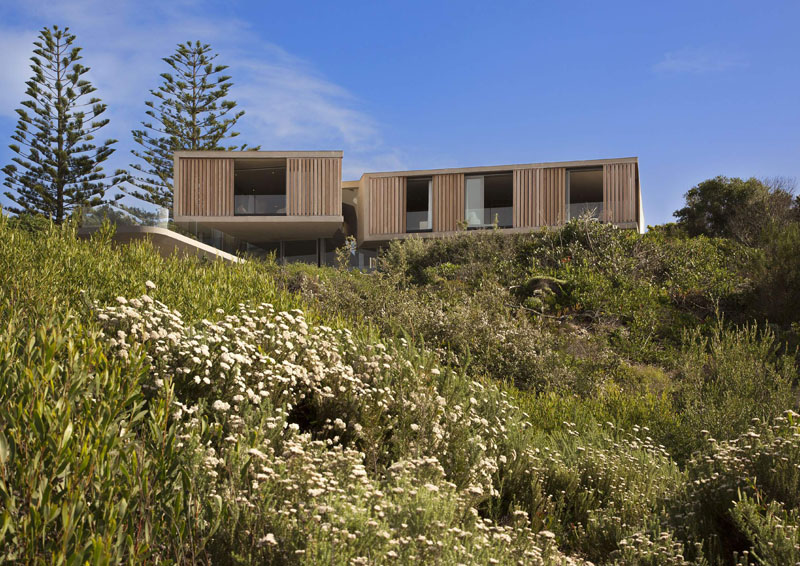
Modern house on the slope of a sand dune
The customers wanted to end up with a home for the whole family, which would benefit from location and view. From the street, the house looks modest. Wood, white and gray colors blend well with the surrounding vegetation.
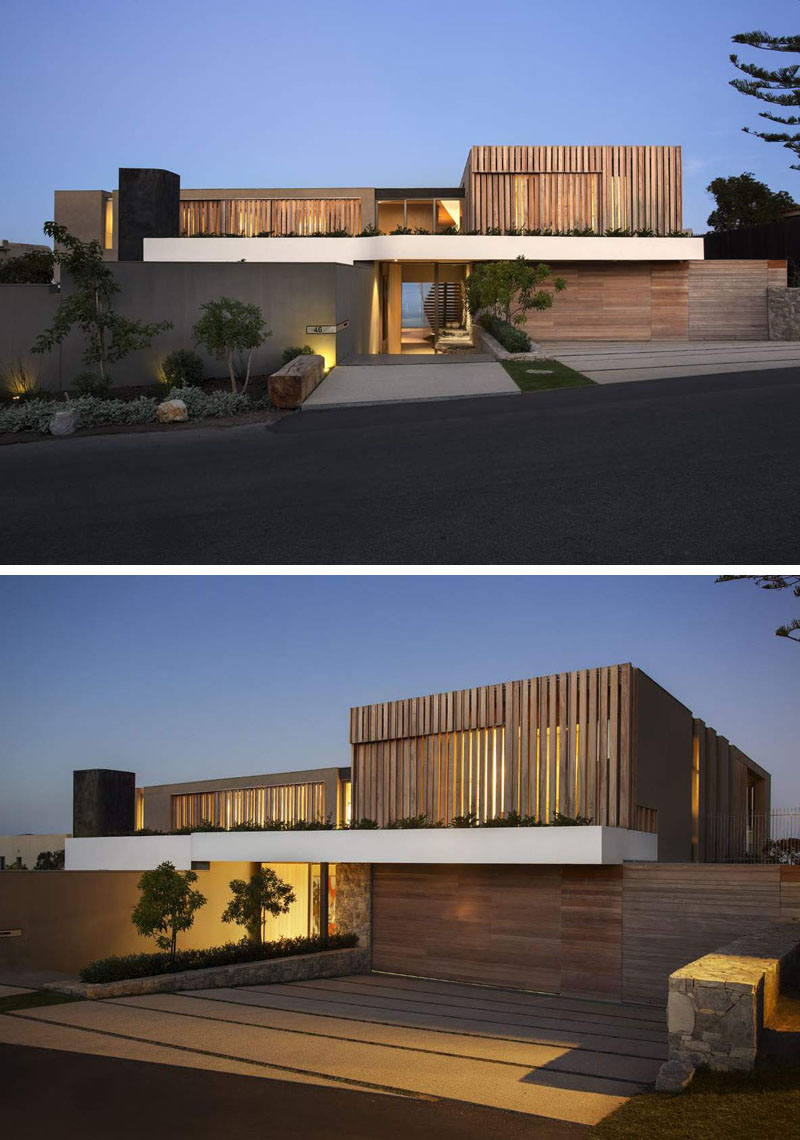
From the side of the street, the house looks modest
On the other side of the house, the outdoor space is fully utilized. There is a swimming pool and indoor seating area.
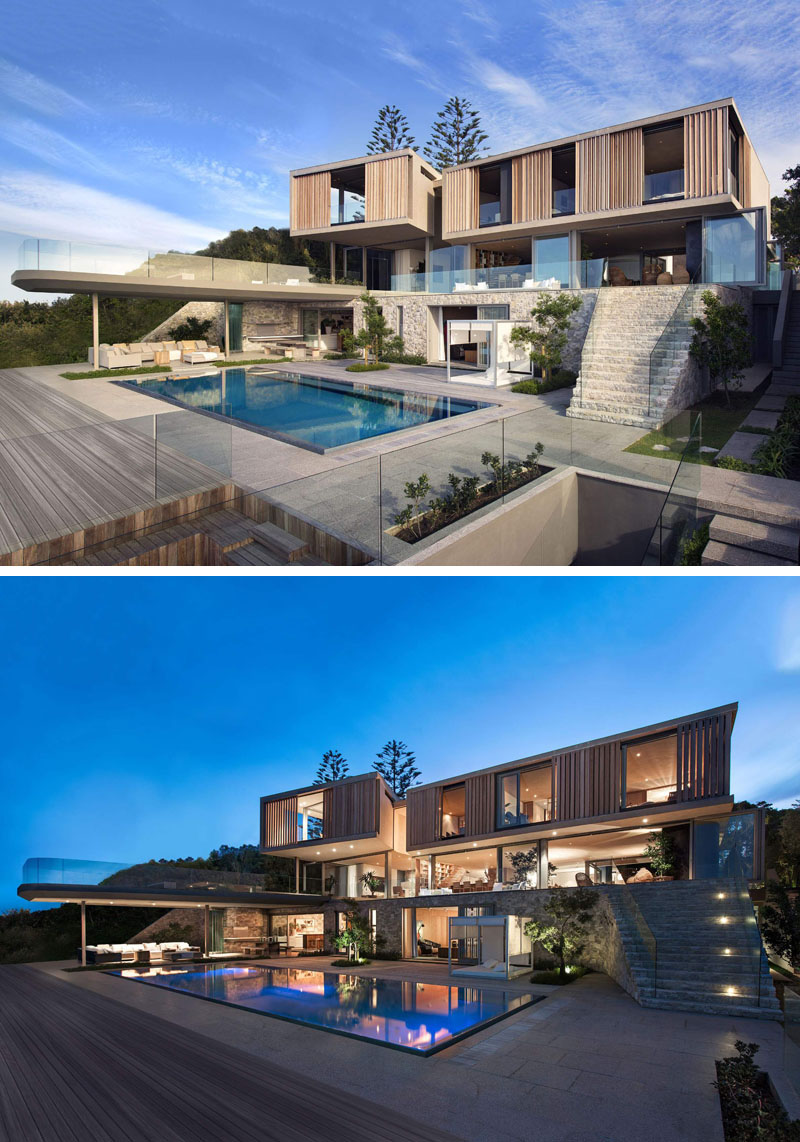
The house reveals its beauty
The house also has a second outdoor seating area, located at the level of the interior living areas. At night, the house glows like a lantern.

Seating area on the second floor
Inside the house, a continuation of the stone wall is made, which begins outside.

The stone wall starts from the outside and goes into the interior
The living room has a curved fireplace, plenty of seating and large natural wood coffee tables. The balcony overlooks the pool located below the level.
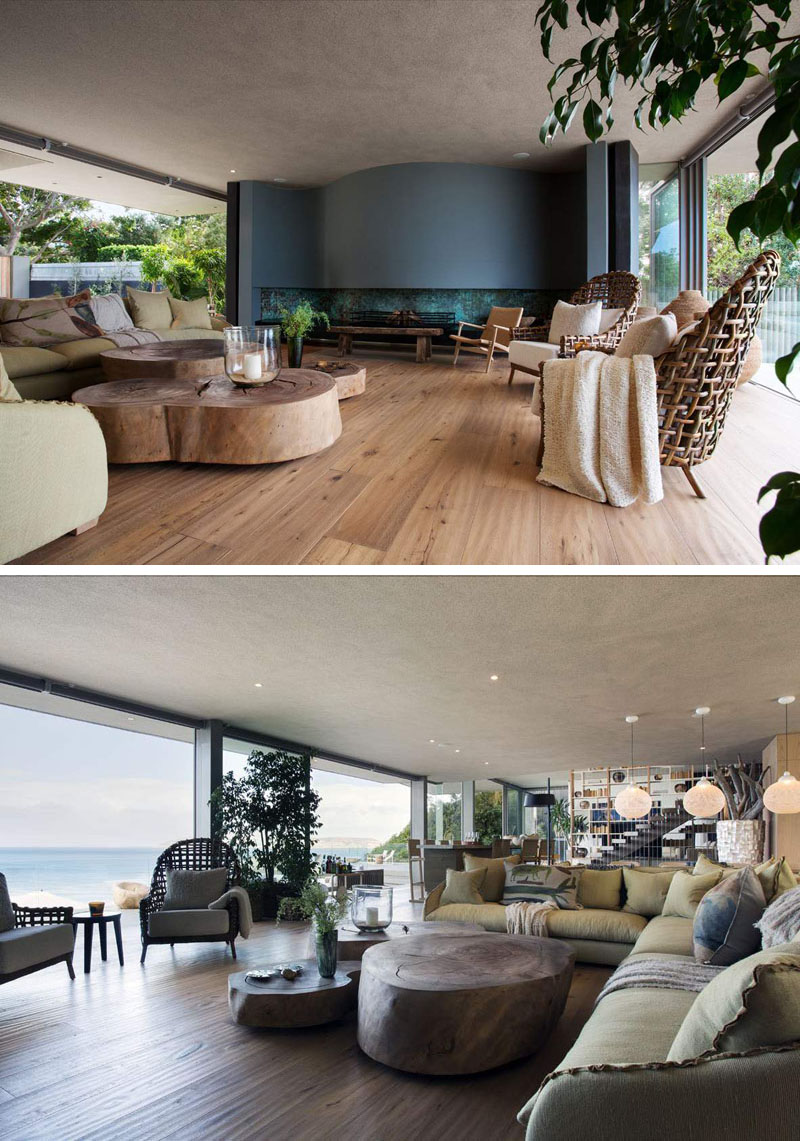
Curved fireplace in the living room
The color palette of the kitchen is simple. It is done in white with small wood inserts that echo the wooden seats of the chairs. The minimalist look is achieved through the use of handleless kitchen cabinets.
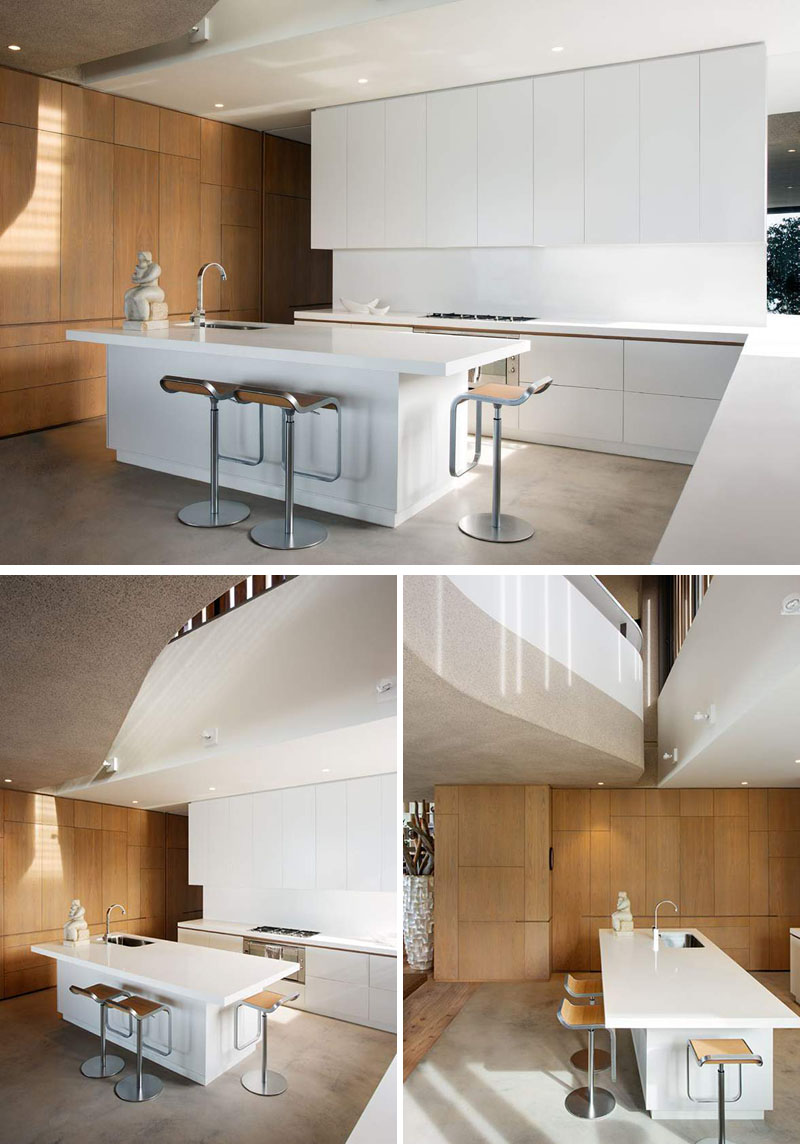
The kitchen is finished in white
There is also a dining room and another living room on this floor.

Dining room and small living room
A bookcase separates the living room from the wooden staircase. A steel cable is used as a stair railing on the other side.
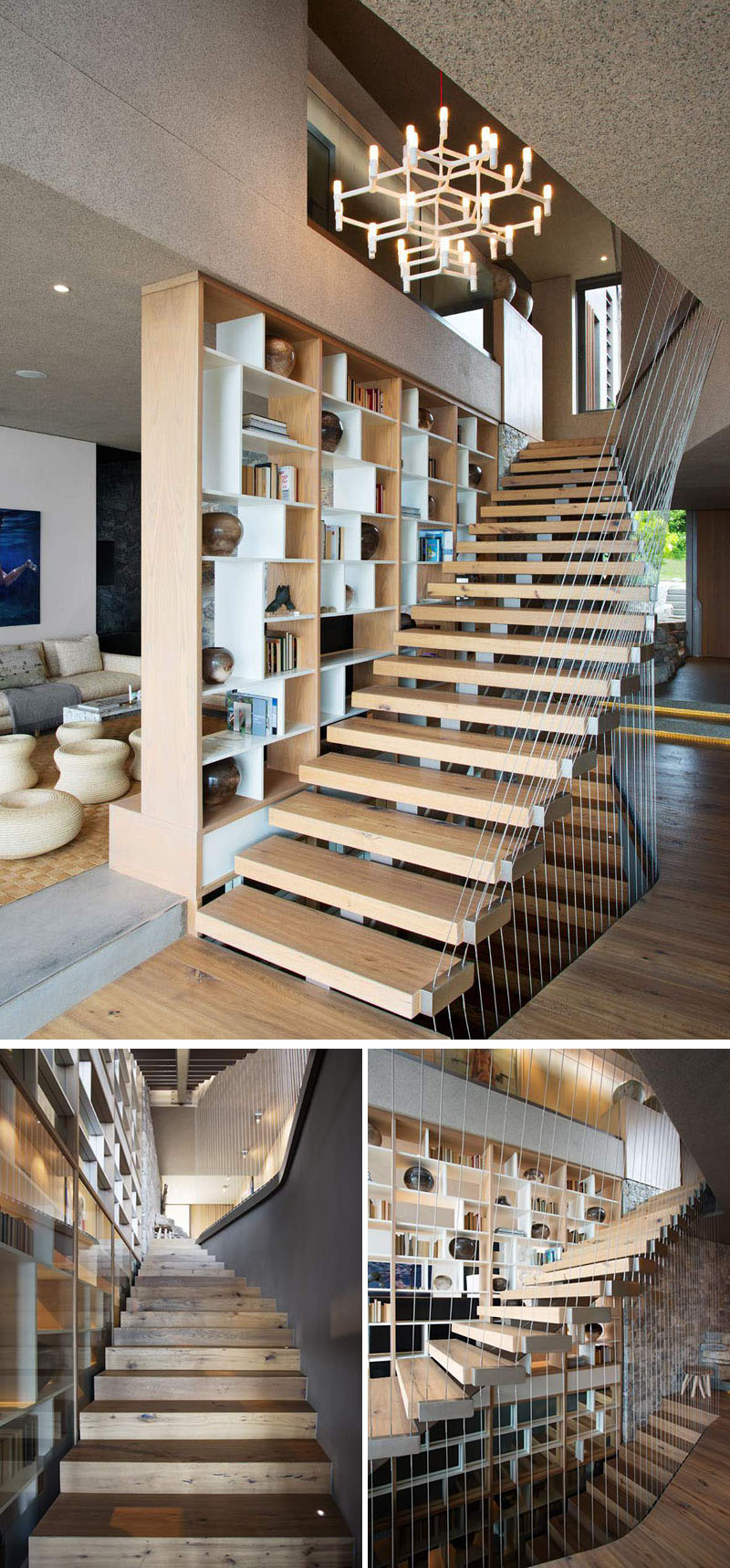
The staircase is fenced off with a bookcase on one side.
The steel cable is stretched to the entire height of the house.
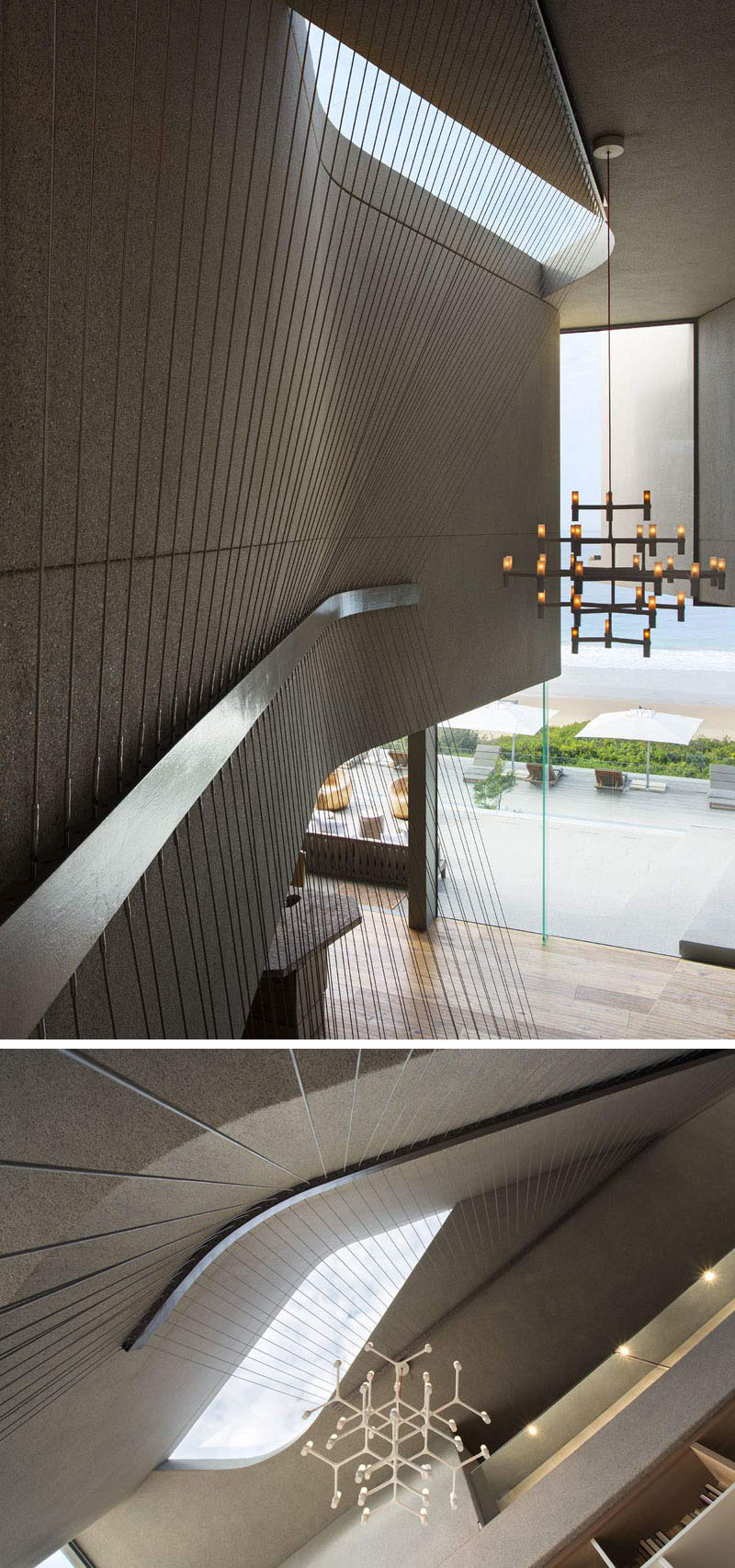
Steel wire fence
Simple natural colors used in the interior are also used in the hallway on the top floor.
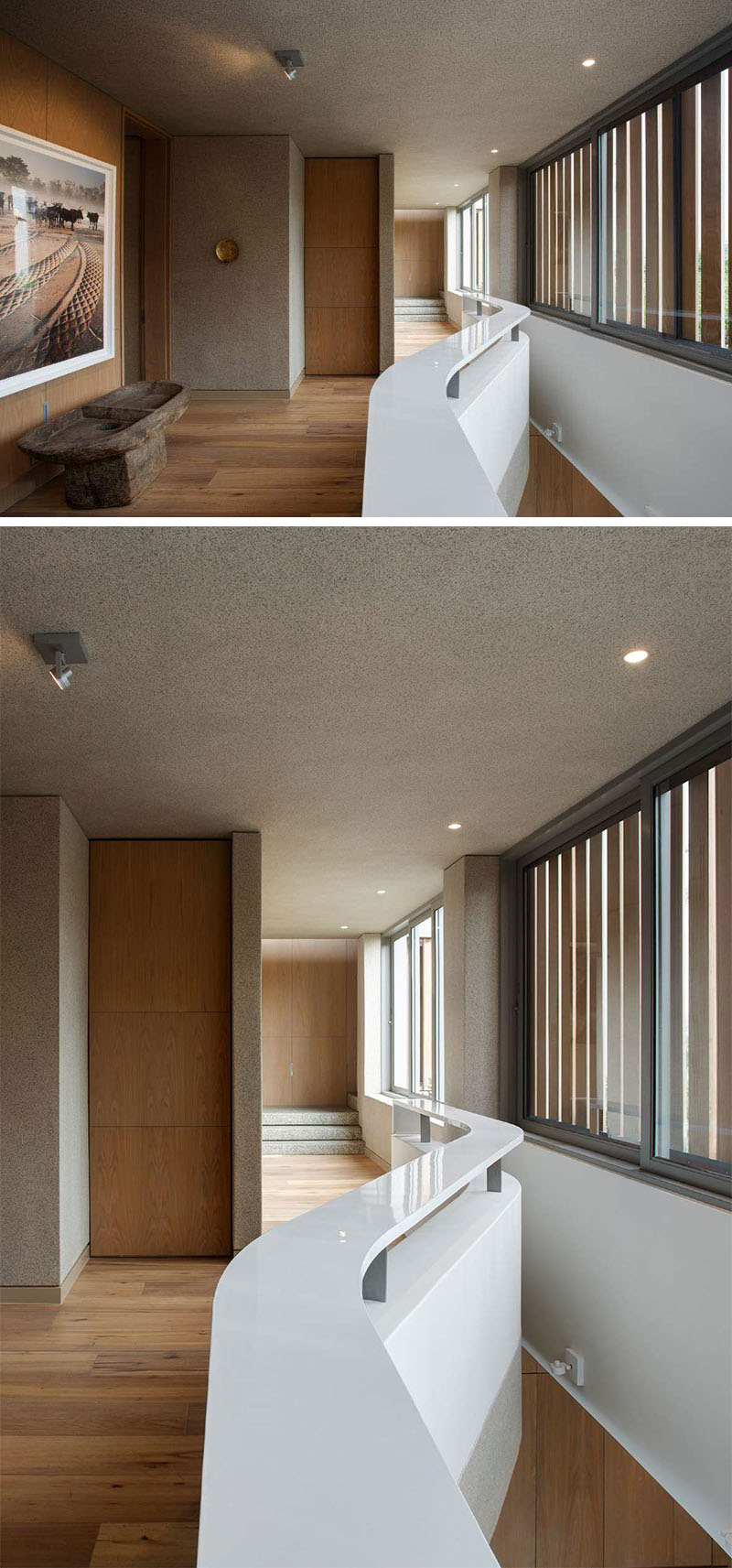
The hallway is made in natural colors
And here, a wooden designer partition separates the bedroom from the bathroom:
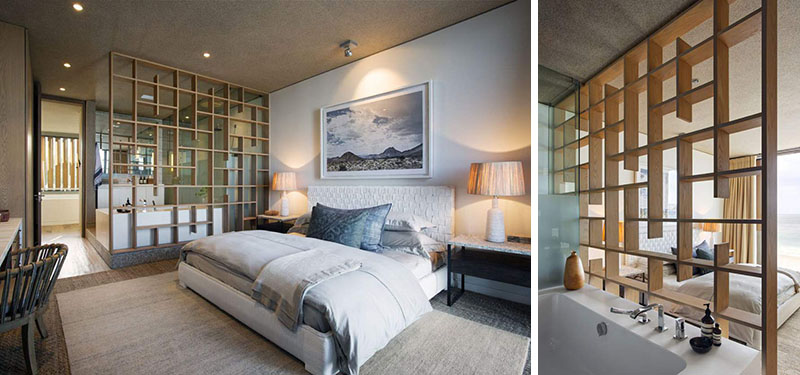
Wooden partition divides the room
Each bedroom has stunning ocean views. Glass doors slide apart.
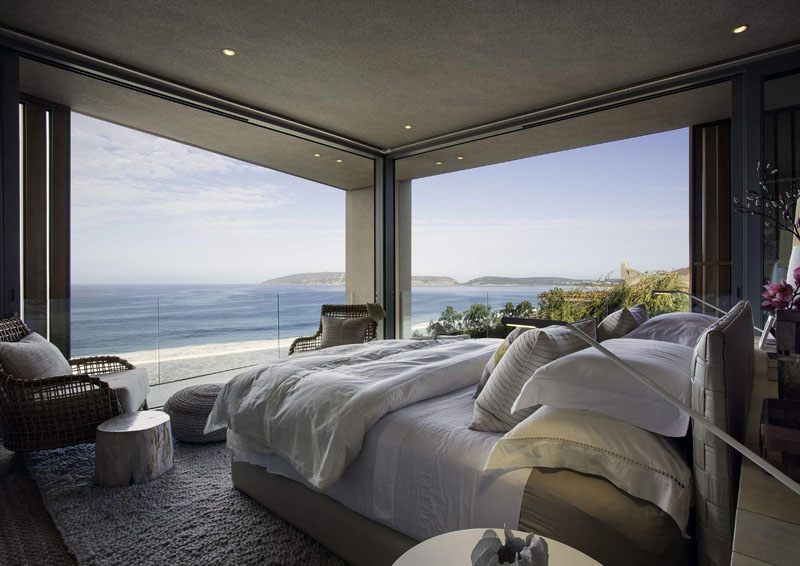
Perfect view from the bedroom window
In these two bedrooms, beds are located in the middle of the rooms, and desks are placed right behind the headboards.
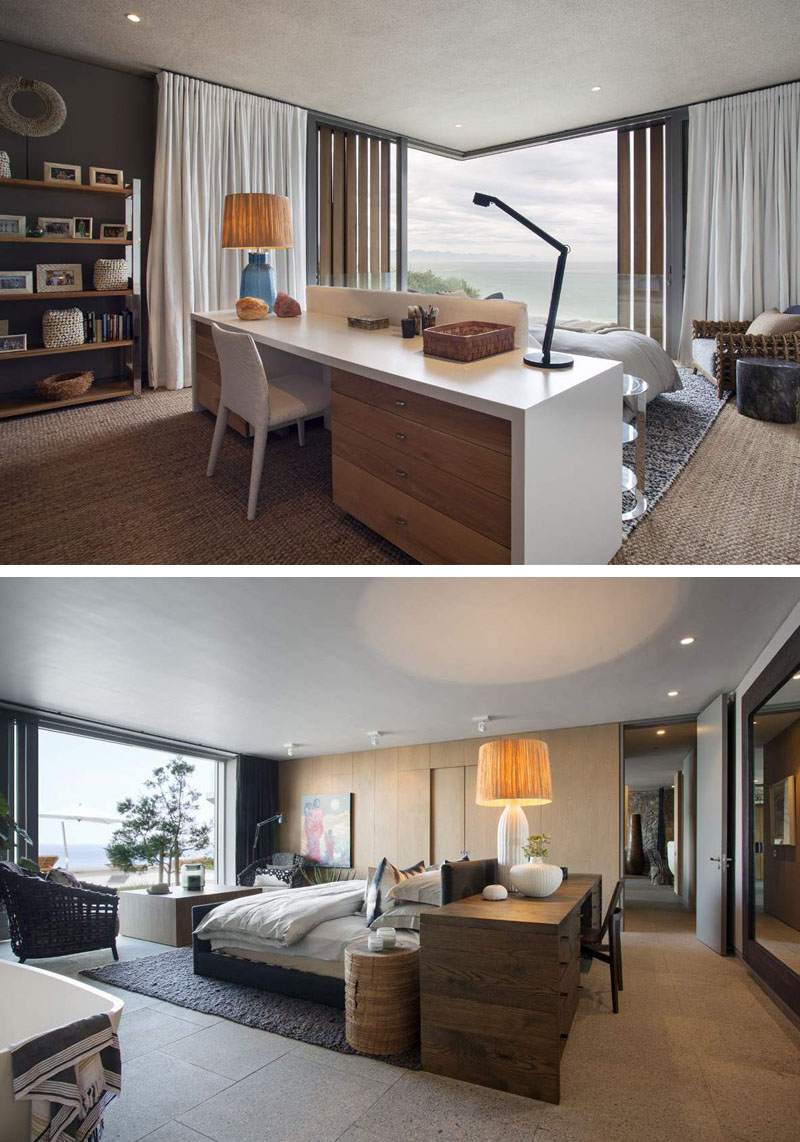
Desk behind the bed
Would you like to live in such a house? Or maybe there is too much open space for you? Leave your opinion in the comments.